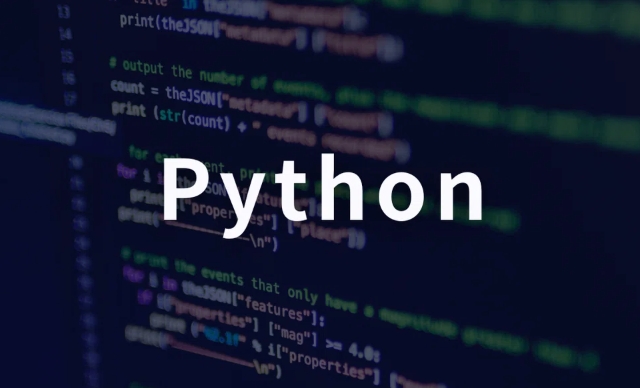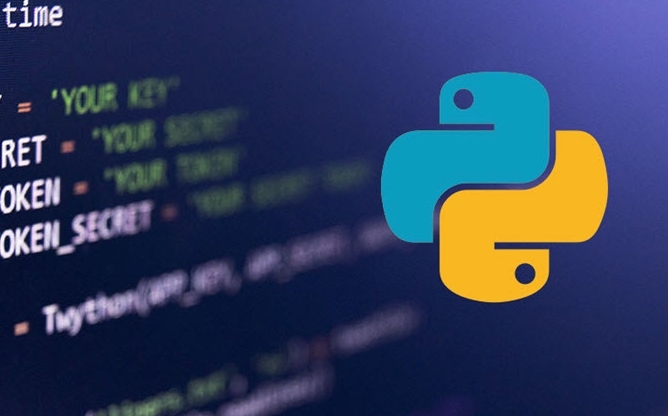The core method of converting dictionary to JSON in Python is to use the built-in json module. The specific steps are as follows: 1. Use json.dumps() to convert the dictionary to JSON string, supporting common data types; 2. If you include Chinese, you need to add ensure_ascii=False parameter to preserve characters; 3. Complex types such as dates or custom objects need to be converted first or processed with default parameters; 4. When writing to a file, json.dump() should be used and the format can be beautified through indent parameters.

Using Python to convert dictionary to JSON is actually very simple, the core is to use the built-in json module. As long as you master a few key points, you will basically not make any mistakes.

Using json.dumps() is the most direct way
In Python, convert dict to JSON strings, the most commonly used one is json.dumps() . This function will automatically process most data types, such as strings, numbers, lists, nested dictionaries, etc.
For example:

import json
data = {
"name": "Alice",
"age": 30,
"is_student": False,
"hobbies": ["reading", "gaming"]
}
json_str = json.dumps(data)
print(json_str)The output is a standard JSON format string:
{"name": "Alice", "age": 30, "is_student": false, "hobbies": ["reading", "gaming"]} Note: Boolean values ??will be converted to lowercase true / false , which is the specification of JSON.

Be careful when dealing with Chinese or special characters
By default, json.dumps() escapes non-ASCII characters into Unicode encoding. If you want to keep Chinese, you need to add the parameter ensure_ascii=False .
for example:
data = {"message": "Hello, world"}
json_str = json.dumps(data, ensure_ascii=False)
print(json_str)This output is:
{"message": "Hello, world"} Otherwise you will see encodings like \u4f60\u597d .
In addition, if the dictionary contains complex types such as date, collection, custom objects, etc., json.dumps() will report an error. At this time, either convert these values ??first or use default parameter to customize the serialization logic.
Use json.dump() when writing files
If you don't want to generate a string, but want to write it directly into a JSON file, you can use json.dump() .
Example:
with open("data.json", "w", encoding="utf-8") as f:
json.dump(data, f, ensure_ascii=False, indent=2) indent=2 is added here to make the output JSON more beautiful and easy to read. If not added, it will be displayed in one line.
Basically that's it. Mainly remember: use json.dumps() to convert strings, add ensure_ascii=False in Chinese, and use json.dump() to write files. You have to deal with complex types yourself.
The above is the detailed content of Python convert dict to JSON. For more information, please follow other related articles on the PHP Chinese website!

Hot AI Tools

Undress AI Tool
Undress images for free

Undresser.AI Undress
AI-powered app for creating realistic nude photos

AI Clothes Remover
Online AI tool for removing clothes from photos.

Clothoff.io
AI clothes remover

Video Face Swap
Swap faces in any video effortlessly with our completely free AI face swap tool!

Hot Article

Hot Tools

Notepad++7.3.1
Easy-to-use and free code editor

SublimeText3 Chinese version
Chinese version, very easy to use

Zend Studio 13.0.1
Powerful PHP integrated development environment

Dreamweaver CS6
Visual web development tools

SublimeText3 Mac version
God-level code editing software (SublimeText3)
 Optimizing Python for Memory-Bound Operations
Jul 28, 2025 am 03:22 AM
Optimizing Python for Memory-Bound Operations
Jul 28, 2025 am 03:22 AM
Pythoncanbeoptimizedformemory-boundoperationsbyreducingoverheadthroughgenerators,efficientdatastructures,andmanagingobjectlifetimes.First,usegeneratorsinsteadofliststoprocesslargedatasetsoneitematatime,avoidingloadingeverythingintomemory.Second,choos
 python connect to sql server pyodbc example
Jul 30, 2025 am 02:53 AM
python connect to sql server pyodbc example
Jul 30, 2025 am 02:53 AM
Install pyodbc: Use the pipinstallpyodbc command to install the library; 2. Connect SQLServer: Use the connection string containing DRIVER, SERVER, DATABASE, UID/PWD or Trusted_Connection through the pyodbc.connect() method, and support SQL authentication or Windows authentication respectively; 3. Check the installed driver: Run pyodbc.drivers() and filter the driver name containing 'SQLServer' to ensure that the correct driver name is used such as 'ODBCDriver17 for SQLServer'; 4. Key parameters of the connection string
 python pandas melt example
Jul 27, 2025 am 02:48 AM
python pandas melt example
Jul 27, 2025 am 02:48 AM
pandas.melt() is used to convert wide format data into long format. The answer is to define new column names by specifying id_vars retain the identification column, value_vars select the column to be melted, var_name and value_name, 1.id_vars='Name' means that the Name column remains unchanged, 2.value_vars=['Math','English','Science'] specifies the column to be melted, 3.var_name='Subject' sets the new column name of the original column name, 4.value_name='Score' sets the new column name of the original value, and finally generates three columns including Name, Subject and Score.
 python django forms example
Jul 27, 2025 am 02:50 AM
python django forms example
Jul 27, 2025 am 02:50 AM
First, define a ContactForm form containing name, mailbox and message fields; 2. In the view, the form submission is processed by judging the POST request, and after verification is passed, cleaned_data is obtained and the response is returned, otherwise the empty form will be rendered; 3. In the template, use {{form.as_p}} to render the field and add {%csrf_token%} to prevent CSRF attacks; 4. Configure URL routing to point /contact/ to the contact_view view; use ModelForm to directly associate the model to achieve data storage. DjangoForms implements integrated processing of data verification, HTML rendering and error prompts, which is suitable for rapid development of safe form functions.
 What is statistical arbitrage in cryptocurrencies? How does statistical arbitrage work?
Jul 30, 2025 pm 09:12 PM
What is statistical arbitrage in cryptocurrencies? How does statistical arbitrage work?
Jul 30, 2025 pm 09:12 PM
Introduction to Statistical Arbitrage Statistical Arbitrage is a trading method that captures price mismatch in the financial market based on mathematical models. Its core philosophy stems from mean regression, that is, asset prices may deviate from long-term trends in the short term, but will eventually return to their historical average. Traders use statistical methods to analyze the correlation between assets and look for portfolios that usually change synchronously. When the price relationship of these assets is abnormally deviated, arbitrage opportunities arise. In the cryptocurrency market, statistical arbitrage is particularly prevalent, mainly due to the inefficiency and drastic fluctuations of the market itself. Unlike traditional financial markets, cryptocurrencies operate around the clock and their prices are highly susceptible to breaking news, social media sentiment and technology upgrades. This constant price fluctuation frequently creates pricing bias and provides arbitrageurs with
 Bioinformatics with Python Biopython
Jul 27, 2025 am 02:33 AM
Bioinformatics with Python Biopython
Jul 27, 2025 am 02:33 AM
Biopython is an important Python library for processing biological data in bioinformatics, which provides rich functions to improve development efficiency. The installation method is simple, you can complete the installation using pipinstallbiopython. After importing the Bio module, you can quickly parse common sequence formats such as FASTA files. Seq objects support manipulation of DNA, RNA and protein sequences such as inversion complementarity and translation into protein sequences. Through Bio.Entrez, you can access the NCBI database and obtain GenBank data, but you need to set up your email address. In addition, Biopython supports pairwise sequence alignment and PDB file parsing, which is suitable for structural analysis tasks.
 python iter and next example
Jul 29, 2025 am 02:20 AM
python iter and next example
Jul 29, 2025 am 02:20 AM
iter() is used to obtain the iterator object, and next() is used to obtain the next element; 1. Use iterator() to convert iterable objects such as lists into iterators; 2. Call next() to obtain elements one by one, and trigger StopIteration exception when the elements are exhausted; 3. Use next(iterator, default) to avoid exceptions; 4. Custom iterators need to implement the __iter__() and __next__() methods to control iteration logic; using default values is a common way to safe traversal, and the entire mechanism is concise and practical.
 python shutil rmtree example
Aug 01, 2025 am 05:47 AM
python shutil rmtree example
Aug 01, 2025 am 05:47 AM
shutil.rmtree() is a function in Python that recursively deletes the entire directory tree. It can delete specified folders and all contents. 1. Basic usage: Use shutil.rmtree(path) to delete the directory, and you need to handle FileNotFoundError, PermissionError and other exceptions. 2. Practical application: You can clear folders containing subdirectories and files in one click, such as temporary data or cached directories. 3. Notes: The deletion operation is not restored; FileNotFoundError is thrown when the path does not exist; it may fail due to permissions or file occupation. 4. Optional parameters: Errors can be ignored by ignore_errors=True






